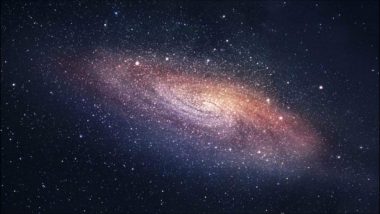Washington, September 23: People can now 'listen' to the centre of the Milky Way as observed in X-ray, optical and infrared light, thanks to a new project which used sonification to turn astronomical images from Chandra and other telescopes into sound.
This project also turned astronomical images of the supernova Cassiopeia A and the "Pillars of Creation" into sound. The Pillars of Creation refers to the towering tendrils of cosmic dust and gas that sit at the heart of M16, or the Eagle Nebula.
The center of our Milky Way galaxy is too distant for us to visit in person, but we can still explore it. Telescopes give people a chance to see what the Galactic Center looks like in different types of light.
By translating the inherently digital data (in the form of ones and zeroes) captured by telescopes in space into images, astronomers create visual representations that would otherwise be invisible to us.
But what about experiencing these data with other senses like hearing? Sonification is the process that translates data into sound, NASA said.
The translation begins on the left side of the image and moves to the right, with the sounds representing the position and brightness of the sources.
The light of objects located towards the top of the image are heard as higher pitches while the intensity of the light controls the volume. Stars and compact sources are converted to individual notes while extended clouds of gas and dust produce an evolving drone.
The crescendo happens when users reach the bright region to the lower right of the image.
This is where the 4-million-solar-mass supermassive black hole at the center of the Galaxy, known as Sagittarius A-star, resides, and where the clouds of gas and dust are the brightest.
Users can listen to data from this region, roughly 400 light years across, either as "solos" from NASA's Chandra X-ray Observatory, Hubble Space Telescope, and Spitzer Space Telescope, or together as an ensemble in which each telescope plays a different instrument.
Each image reveals different phenomena happening in this region about 26,000 light years from Earth.
The Hubble image outlines energetic regions where stars are being born, while Spitzer's infrared image shows glowing clouds of dust containing complex structures. X-rays from Chandra reveal gas heated to millions of degrees from stellar explosions and outflows from Sagittarius A-star.
(The above story first appeared on LatestLY on Sep 23, 2020 12:58 PM IST. For more news and updates on politics, world, sports, entertainment and lifestyle, log on to our website latestly.com).













 Quickly
Quickly


